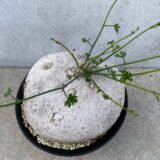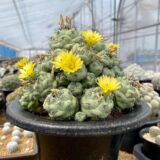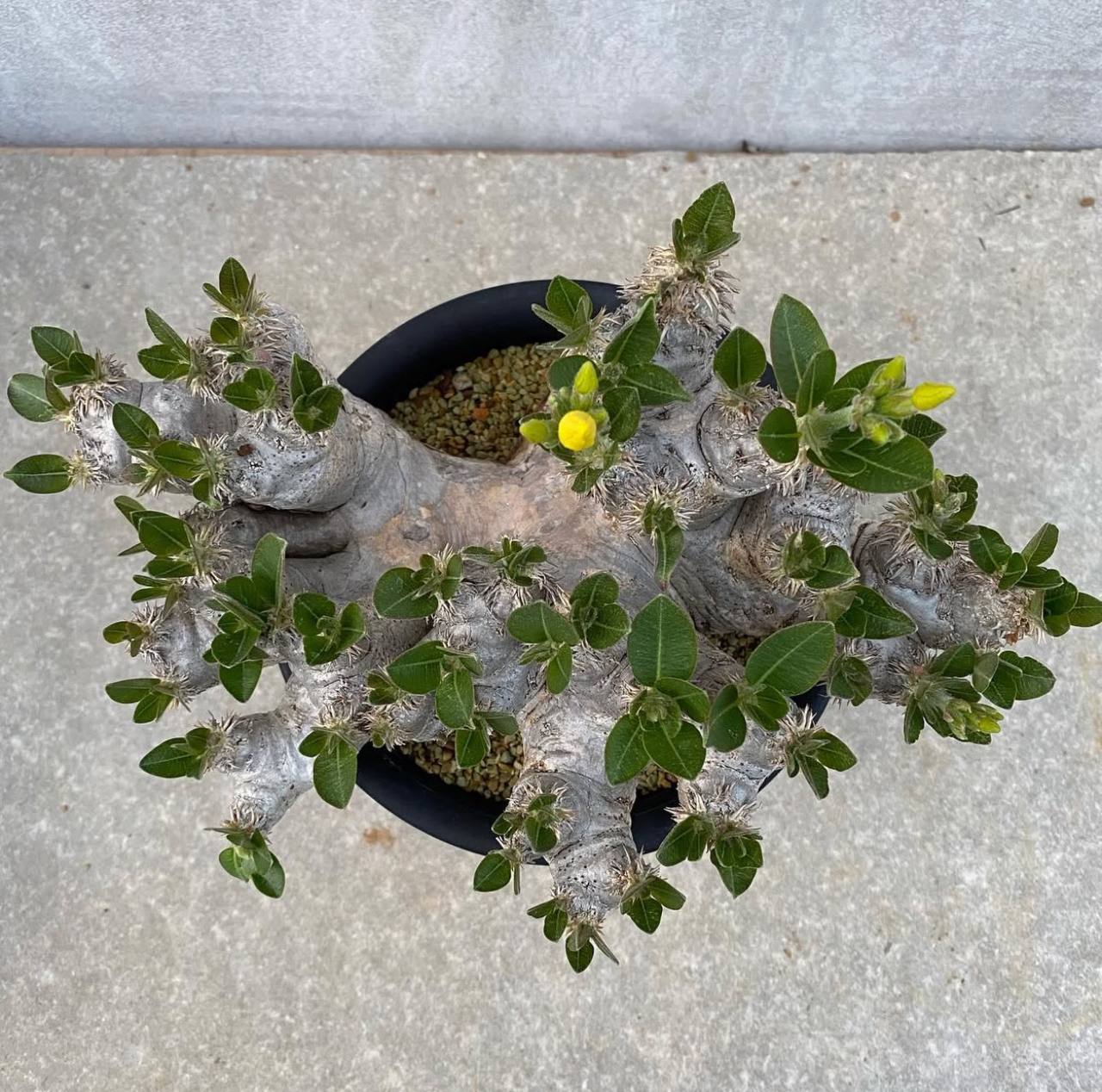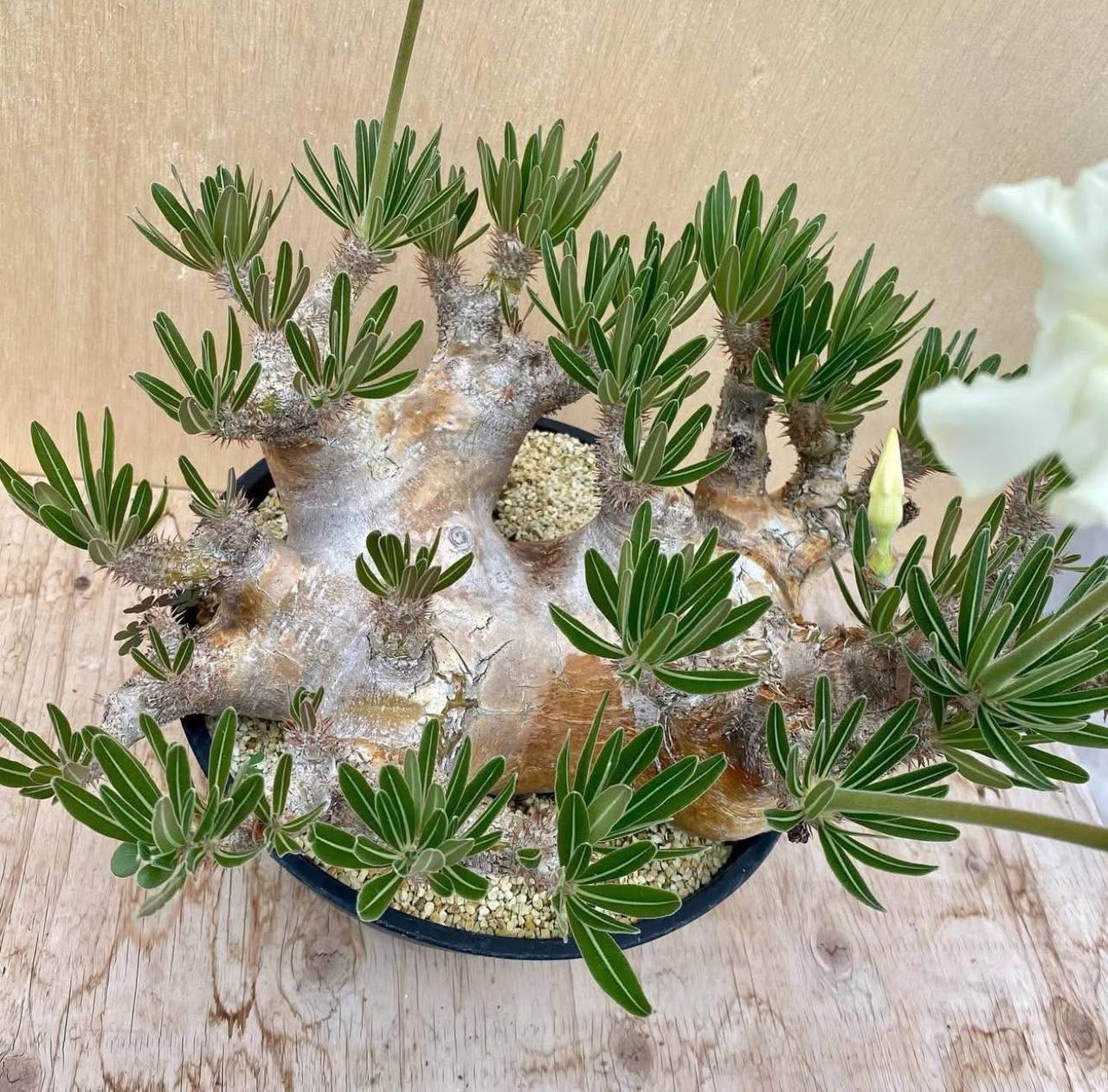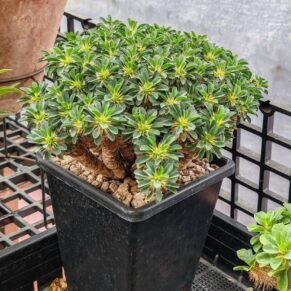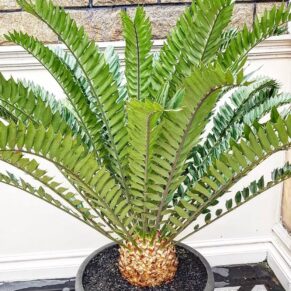- Your cart is empty
- Continue shopping
Pachypodium densiflorum: A Comprehensive Guide to the Stunning Madagascar Succulent
Introduction
Pachypodium densiflorum is a striking species in the Pachypodium genus, a group of plants renowned for their dramatic appearance and remarkable resilience. This particular species, native to Madagascar, is characterized by its unique succulent form, which combines elements of both shrubs and trees, making it an attractive addition to ornamental and xeriscaping gardens worldwide. Facebook group.Like many plants from Madagascar, P densiflorum has evolved to survive in arid environments, showcasing a stunning array of adaptations that allow it to withstand drought, heat, and soil degradation.
In this guide, we will explore every aspect of P densiflorum, from its taxonomic classification and physical traits to its habitat, ecological role, cultivation tips, and conservation status. Additionally, we will discuss the plant’s uses, both historical and modern, and the growing interest in cultivating this species in various parts of the world.Shop densiflorum here

What is Pachypodium densiflorum?
P densiflorum is a succulent shrub or small tree that belongs to the Apocynaceae family, which also includes other notable species such as the oleander and the frangipani. This plant is endemic to Madagascar, an island known for its unique flora and fauna. The species name “densiflorum” refers to the dense clusters of flowers that emerge from the plant, which are one of its most striking features.
Taxonomy and Classification
P densiflorum is scientifically classified as follows:
-
Kingdom: Plantae
-
Division: Angiosperms
-
Class: Eudicots
-
Order: Gentianales
-
Family: Apocynaceae
-
Genus: Pachypodium
-
Species: P. densiflorum
The Pachypodium genus contains several species, most of which are found in Madagascar, although some species are found in mainland Africa. P densiflorum is one of the lesser-known species of the genus but is highly regarded for its ornamental value and the beauty it brings to xeriscaped gardens and succulent collections.Shop densiflorum here
Habitat and Distribution of Pachypodium densiflorum
Natural Habitat
Pachypodium densiflorum is native to the arid regions of Madagascar, an island that is home to many unique species due to its isolation from mainland Africa. This species thrives in dry, rocky, and well-drained soils, often found in tropical and subtropical regions of the island. In the wild, P densiflorum is typically found growing in areas that are subject to seasonal rainfall, which is characteristic of Madagascar’s climate.
The primary habitats for Pachypodium densiflorum include:
-
Dry scrublands
-
Rocky hillsides and valleys
-
Cactus and succulent-rich ecosystems
Climate and Environmental Conditions
The climate of Madagascar plays a significant role in the growth and development of P densiflorum. The island experiences distinct wet and dry seasons, and the plant has adapted to survive in areas where rainfall can be sparse for extended periods.
-
Temperature: Pachypodium densiflorum is adapted to warm conditions, with temperatures typically ranging from 25°C to 35°C (77°F to 95°F) during the day.
-
Rainfall: The plant thrives in regions that experience seasonal rainfall, but it can also endure prolonged dry periods, making it a suitable species for xeriscaping.
-
Soil Type: Well-draining, rocky, and sandy soils are ideal for this plant, as they prevent water from accumulating around the roots, which could lead to rot.
Geographic Range
Pachypodium densiflorum is found primarily in the southwestern regions of Madagascar, although it may also be present in smaller pockets across the island. Due to Madagascar’s rich biodiversity and complex climate zones, Pachypodium densiflorum can often be found in areas where there is a transition between tropical rainforests and dry savannas.Shop densiflorum here
Physical Characteristics of P densiflorum
P densiflorum is a beautiful and intriguing plant, notable for its spiny, succulent trunk and its vibrant flowers. The plant is well-suited to arid environments and has developed several adaptations that allow it to conserve water and survive in hot, dry conditions.
Size and Growth Form
Pachypodium densiflorum can grow as a large shrub or small tree, typically reaching heights of 1.5 to 3 meters (5 to 10 feet), although some specimens can grow even taller under optimal conditions. The plant features a robust, columnar stem that is thick and succulent, which enables it to store water for use during dry periods.
-
Trunk: The plant’s trunk is swollen and fleshy, similar to other succulents in the Pachypodium genus, and serves as a water reservoir during drought conditions.
-
Branches: The branches of Pachypodium densiflorum grow from the central trunk and are often spiny, giving the plant its distinctive, spiky appearance. These branches can grow in a vertical or slightly spreading manner.
Leaves
The leaves of P densiflorum are elongated, thick, and leathery, designed to minimize water loss. They are arranged in clusters along the branches and typically grow at the tips of the plant. The leaves are:
-
Dark green in color
-
Glossy and smooth in texture
-
Tapered at the tips, which helps reduce water loss through transpiration.
The leaves of Pachypodium densiflorum have an important role in photosynthesis, and their waxy coating helps protect the plant from excessive evaporation in the hot, dry environment.
Flowers and Reproduction
P densiflorum is particularly admired for its beautiful flowers, which emerge from the plant in dense clusters. These flowers typically bloom in the late spring or early summer months when the plant has stored enough water to support its reproductive cycle.
-
Color: The flowers are generally white or pale yellow, although some variations may feature pink or cream hues.
-
Shape: The flowers are tubular, with a funnel-shaped corolla that attracts pollinators, including bees and butterflies.
-
Pollination: The plant is primarily pollinated by insects, with the flowers offering nectar as a reward.
The flowers of Pachypodium densiflorum are highly fragrant, adding to the allure of this species as both a decorative and aromatic plant. After pollination, the plant produces a pod-like fruit that contains numerous small seeds. These seeds can be harvested for propagation.
Ecological Role of Pachypodium densiflorum
P densiflorum plays an important role in the ecosystems where it grows. As a succulent, it serves as a water reservoir for desert-adapted wildlife during the dry season. The thick, fleshy trunk helps store water, making it a valuable resource for animals and insects in an arid landscape.
Wildlife and Pollination
-
Pollinators: The flowers of Pachypodium densiflorum attract a variety of insects, including bees and butterflies, which help facilitate pollination and contribute to the plant’s reproductive success.
-
Seed dispersal: After the plant’s fruits mature, they release small seeds that can be dispersed by the wind or carried by animals, helping propagate the species across the landscape.
-
Water storage: In the harsh environments of Madagascar, Pachypodium densiflorum’s ability to store water in its trunk makes it an important species for local wildlife, providing a crucial resource during periods of drought.
Uses of Pachypodium densiflorum
Traditional and Medicinal Uses
In traditional Malagasy culture, various species of Pachypodium, including Pachypodium densiflorum, have been used for their medicinal properties. While P densiflorum itself has not been widely studied for its medicinal uses, it is part of the Apocynaceae family, which contains plants known for their alkaloids, latex, and other bioactive compounds.
-
Traditional medicine: Some species in the Pachypodium genus have been used for treating ailments such as fever, infections, and inflammation. It is possible that Pachypodium densiflorum may have similar applications in traditional remedies.Shop densiflorum here
Ornamental Uses
P densiflorum is highly prized for its ornamental value. It is grown as an ornamental plant in gardens around the world, particularly in xeriscaped environments where water conservation is a priority. Its unique, spiny appearance and vibrant flowers make it an excellent focal point in succulent and desert-inspired landscaping.
-
Landscaping: Due to its striking appearance, Pachypodium densiflorum is often used in desert gardens, succulent gardens, or as an accent plant in water-wise landscaping.
-
Container gardening: This plant also thrives in containers, where it can be grown in a controlled environment with proper drainage.

Pachypodium densiflorum
Cultivation and Care of Pachypodium densiflorum
Growing Conditions
P densiflorum requires specific conditions to thrive. When cultivating this plant outside of its native habitat, it is important to replicate the arid conditions of its Madagascar home.
-
Light: Full sun is crucial for healthy growth. It should be placed in a location where it can receive direct sunlight for at least 6-8 hours per day.
-
Soil: Well-draining soil is essential for P densiflorum. A cactus or succulent mix that drains quickly is ideal. The plant does not tolerate standing water around its roots.
-
Watering: Water sparingly, allowing the soil to dry completely between waterings. Overwatering can lead to root rot, so it is crucial to ensure the plant is not kept in soggy conditions.
-
Temperature: The plant thrives in warm temperatures and should be kept in environments that do not drop below 10°C (50°F) during the winter months.
Propagation
P densiflorum can be propagated from seeds, although the process can be slow. The seeds should be sown in well-draining soil and kept in a warm, sunny location. Propagation from cuttings is also possible but requires care to ensure the cuttings form calluses before planting.
Conservation of Pachypodium densiflorum
Conservation Status
P densiflorum is not currently listed as endangered, but as with many species endemic to Madagascar, it faces threats from habitat destruction, climate change, and over-collection for ornamental purposes. Conservation efforts are essential to protect the natural habitats of Madagascar’s unique flora.
Threats
-
Habitat loss: The expansion of agriculture and human settlement in Madagascar puts pressure on the natural habitats of plants like P densiflorum.
-
Climate change: Shifts in temperature and rainfall patterns threaten the delicate balance of Madagascar’s ecosystems, which may affect species like P densiflorum.
-
Overcollection: The growing popularity of P densiflorum in ornamental horticulture could lead to overcollection in the wild, especially if unsustainable harvesting practices are not controlled.Shop densiflorum here
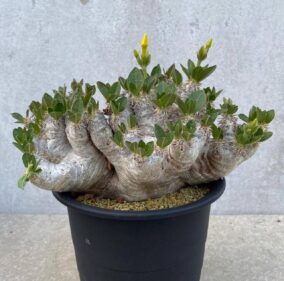
Pachypodium densiflorum
Conclusion
Pachypodium densiflorum is a beautiful and resilient succulent that represents the remarkable biodiversity of Madagascar. Whether grown for its ornamental value, studied for its unique adaptations, or appreciated for its ecological role in arid landscapes, this plant continues to captivate the attention of horticulturists, ecologists, and collectors. By understanding its needs, cultivating

